Market Outlook
today’s session saw a moderately positive performance from the Nifty, despite a choppy and range-bound trading pattern between 21,800 and 22,200. The week’s shortened trading schedule and impending U.S. economic data release, including GDP numbers, add a layer of anticipation, especially following the Fed’s indication of potential rate cuts in 2024. However, the recent rate hike by Japan introduces a degree of uncertainty regarding future U.S. rate adjustments.
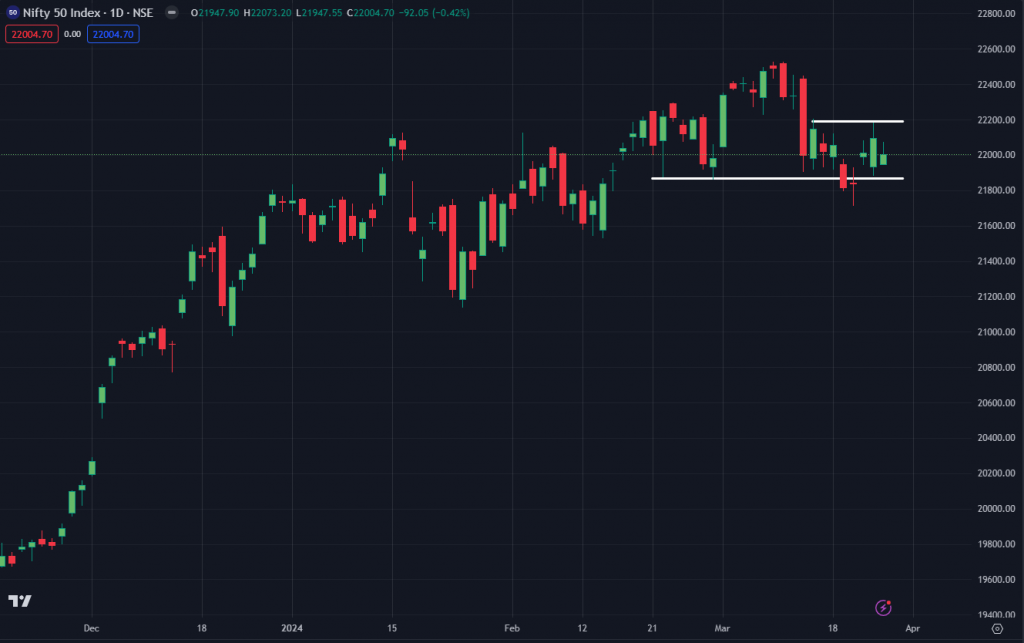
Nifty Heatmap
Despite the Nifty’s subdued close, the broader market fared quite well, excluding IT stocks, which were impacted by Accenture’s performance downturn in the U.S. This had a knock-on effect on Indian IT firms, pulling down heavyweights like Infosys, TCS, Wipro, and HCL Tech. On the brighter side, sectors like real estate, autos, and pharma led the gains, contributing to a green-filled heatmap.
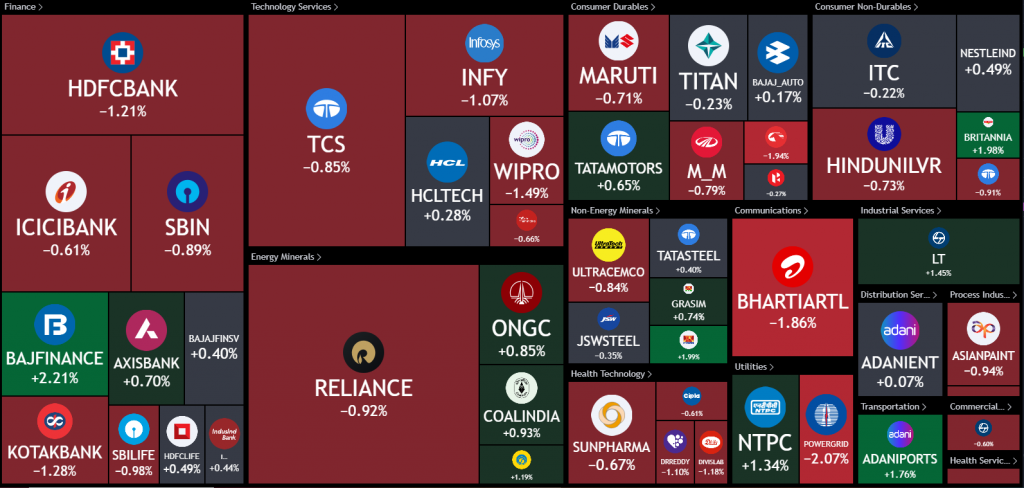
Sectoral Overview
The market’s resilience is further evidenced by the sectoral performance, with real estate, public sector enterprises, and metals leading the weekly gains, reinforcing their positions as the rally’s frontrunners. However, IT’s recent downturn, as highlighted by today’s performance and its month-long trend, poses a challenge to be monitored closely.
Mid & Small Cap Performance
Looking ahead, the mid and small-cap indices show promising signs of recovery, with mid-caps breaking past resistance and small caps posting modest gains.
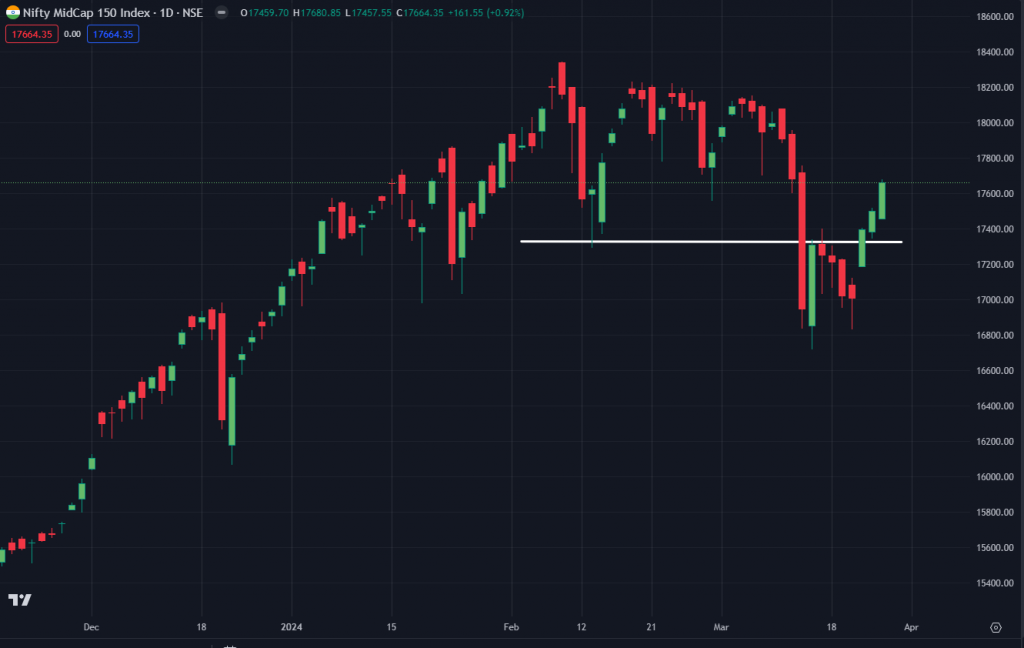
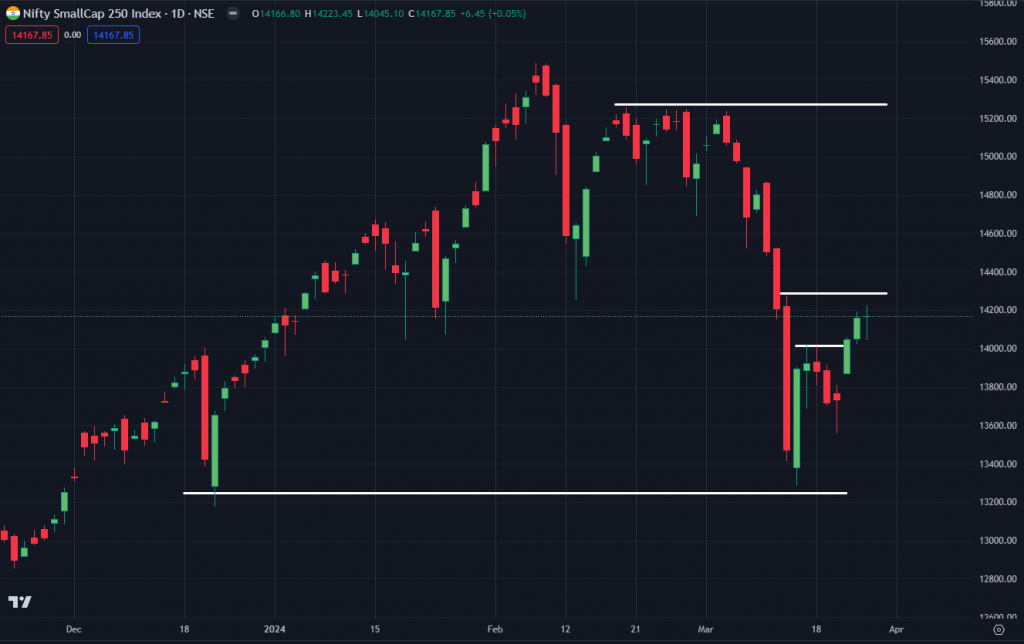
Nifty Bank Overview
The banking sector, especially Nifty Bank, remained neutral, indicating potential consolidation before the next move. Nifty Next 50 stands out for its robust performance, nearing a fresh all-time high and underscoring its significant role in driving market momentum.
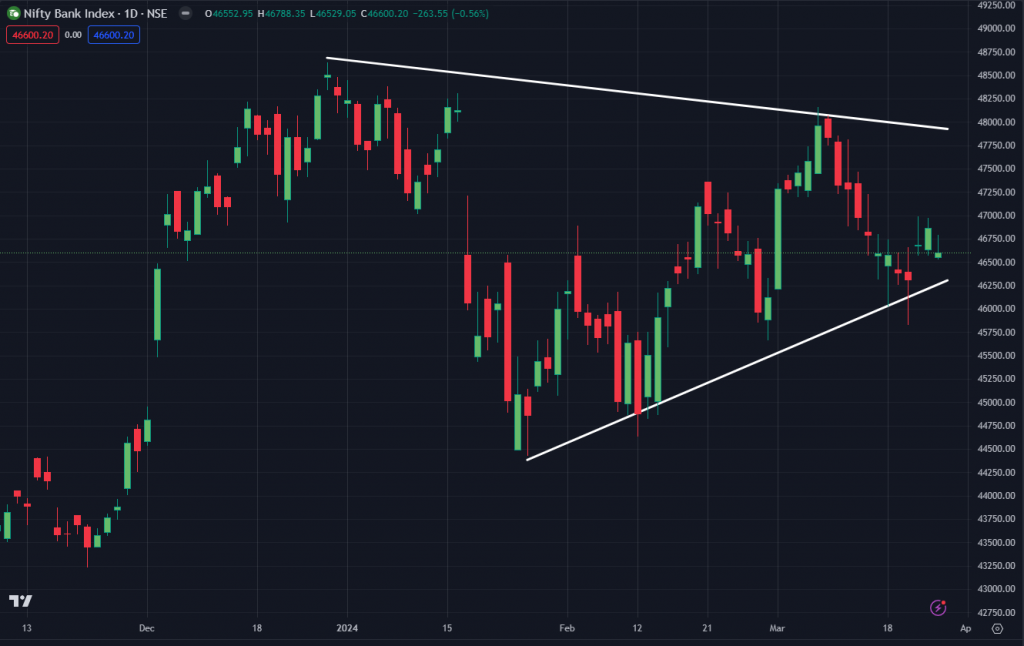
Nifty Junior
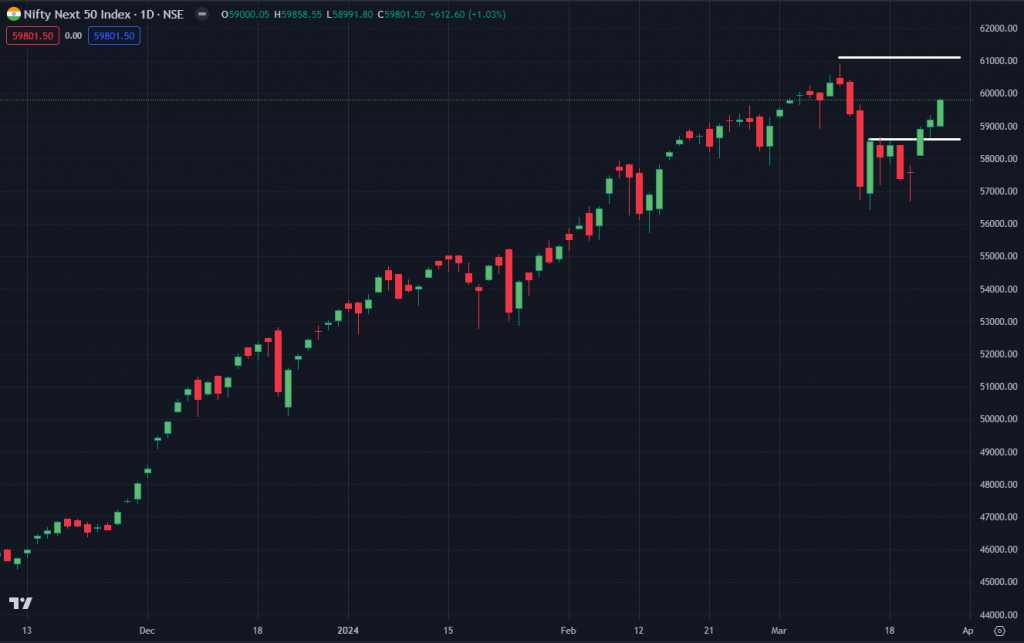
Momentum Investing Navigates Sectoral Shifts and Stock Selection for Optimal Returns
Many might be pondering over which sectors to keep an eye on for FY 25, but the truth is, predicting the future performance of sectors is a challenging endeavor. Surprisingly, real estate, which had been in a long consolidation phase, emerged as a breakout star, defying expectations by leading the charge in FY 24 alongside public sector enterprises and PSU banks. Such developments often catch the majority off guard, though a few astute observers might have seen the signs early on.
The question then arises: how can one seamlessly tap into these trends? Momentum investing provides a clear answer, removing guesswork and allowing investors to adapt to market dynamics effectively. While timing the market perfectly is nearly impossible, and we might enter a bit after a trend has begun, this doesn’t necessarily hinder success. For instance, catching a trend mid-way can still yield substantial returns, negating the need for perfect precision.
Consider IT as a sector; it might have been the darling of FY 23, leading many to continue their investments in anticipation of ongoing success. However, the tables turned as it lagged behind the Nifty 50, with PSU stocks outperforming significantly. The future could very well flip once again, showcasing the cyclical and unpredictable nature of sector performances.
Momentum investing sidesteps these uncertainties by employing a disciplined, rule-based approach to follow the market’s lead, ensuring investments are aligned with current trends. This strategy mitigates the risk of betting on the continuity of past performances and allows for dynamic reallocation based on actual market movements. It’s a method that not only captures gains from high-performing sectors but also provides an exit strategy for when momentum shifts, thereby offering a comprehensive solution to navigating the complexities of market trends.
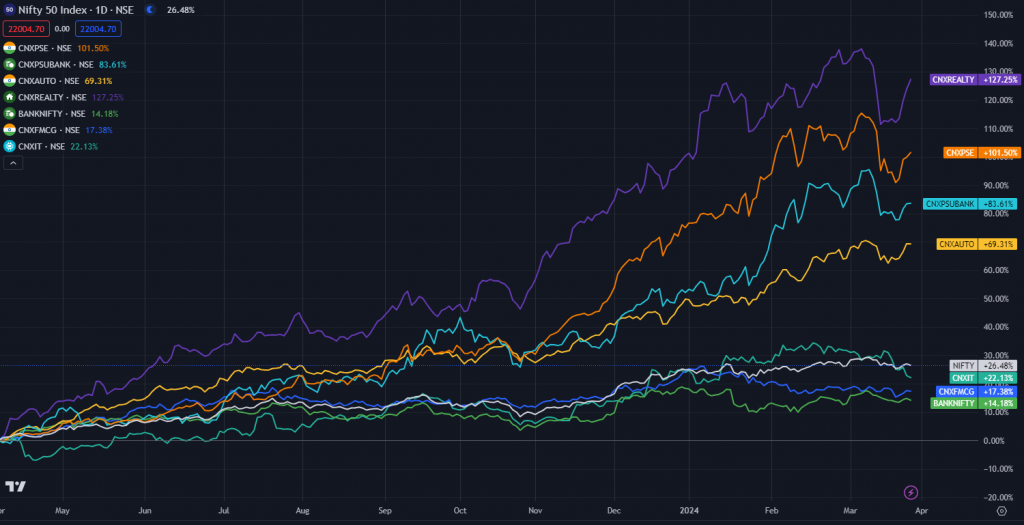
Expanding on this, consider the scenario with auto stocks. Suppose you had focused on the auto sector last year. Even if it wasn’t the top performer, a 69% gain is impressive. Yet, deciding which stocks within the sector will excel presents another layer of complexity. For example, while the CNX Auto Index rose by 70%, individual performances varied widely, with Bajaj Auto and Tata Motors skyrocketing by 100% and 125%, respectively, whereas Bal Krishna Industries, Ashok Leyland, and Eicher Motors didn’t fare as well. This discrepancy illustrates the challenge in picking winners within a specific sector.
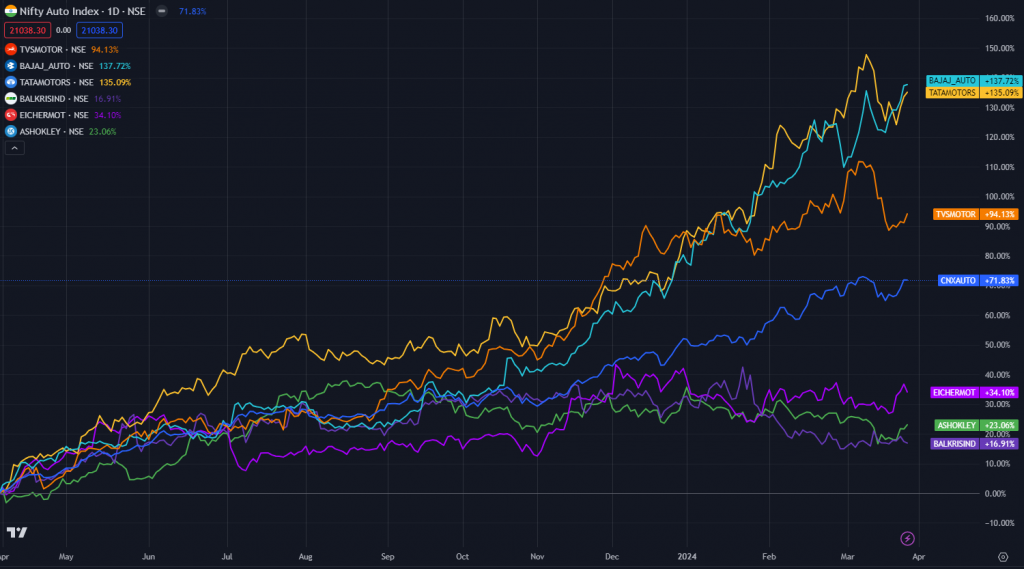
This is where the beauty of momentum investing truly shines. It alleviates the need to guess which stocks within a promising sector will outperform. By adhering to a strategy that adjusts to the market’s current favorites, your investment automatically shifts towards stocks demonstrating the highest potential. This approach ensures capital is not just spread across a sector but is concentrated in stocks riding the wave of momentum, maximizing the opportunity for substantial gains without the guesswork or constant market monitoring. Thus, momentum investing isn’t just about choosing the right sectors but also about selecting the top performers within those sectors, simplifying investment decisions and aiming for optimal results.










